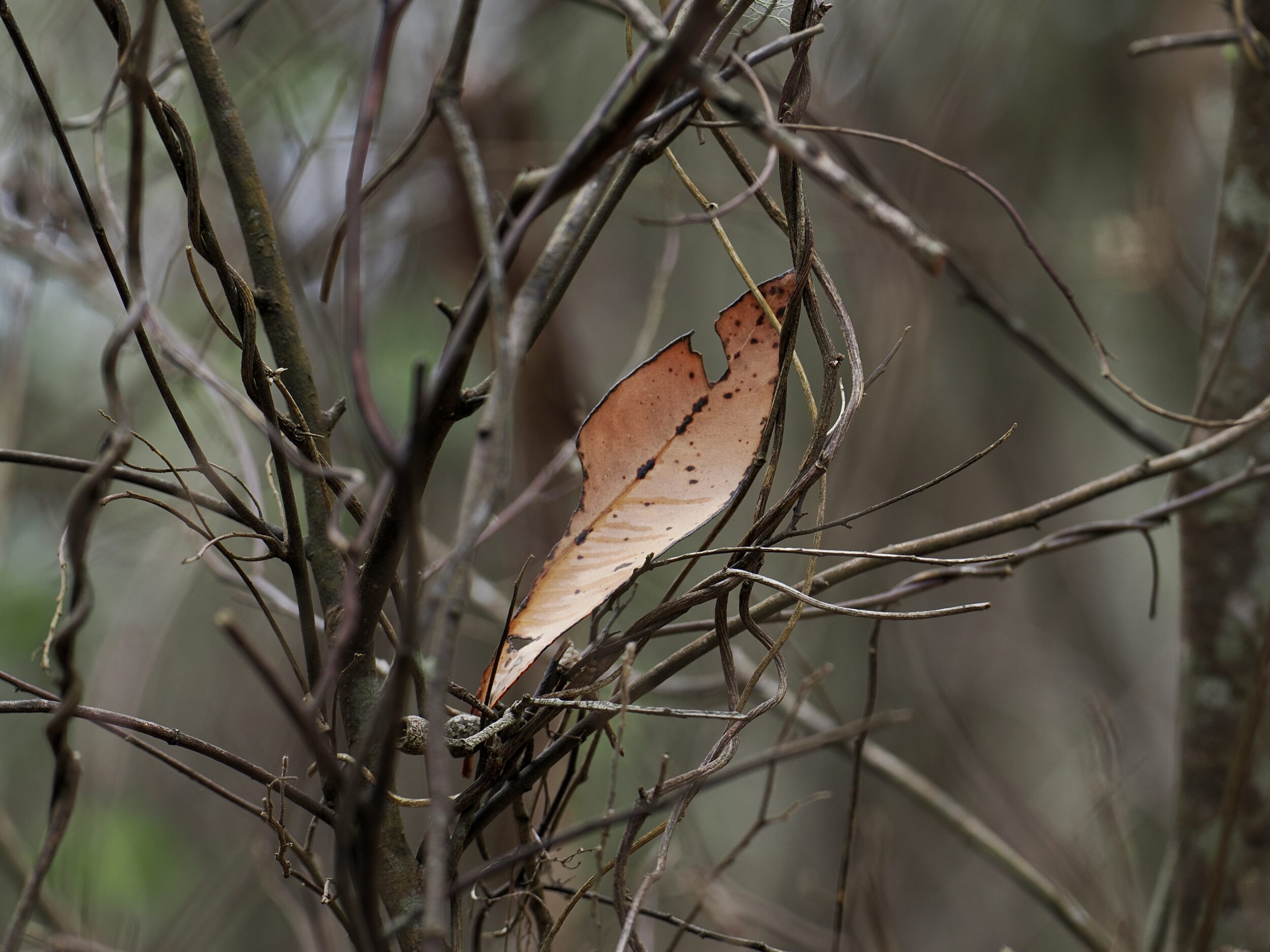This post’s images show the appearance of the forest understory on the lower slopes of the Porongurups at the driest time of year, in an especially dry summer.
The local climate is “Mediterranean”, with cool wet winters, and warm dry summers.
Each photo’s “hero” dead leaf is wedged, approximately as high above the forest floor as would be the eyes of a tall human, standing there.
In such a forest (one dominated by tall eucalypts) it is perfectly normal to see the ground rendered largely invisible – “buried” beneath masses of leaf litter, bark, twigs & small branches.
Wherever the local climate has very marked “wet” and “dry” seasons, healthy local forests are likely to look decidedly stark during “the dry”, but almost “rainforest-lush” in “the wet”.

All the above said, over recent decades, southwestern WA has become dramatically “drier”, overall.
The climate has also become more “erratic”; individual rain events are often atypically extreme (big or small), unusually close together, or far apart, and what rain does fall is increasingly likely to fall at “wrong” times.
We have walked in Porongurup National Park more than a few times, over four decades.
To my eyes, its inland-facing side looked more “parched” in February 2025 than at any other time in our experience.

Comments